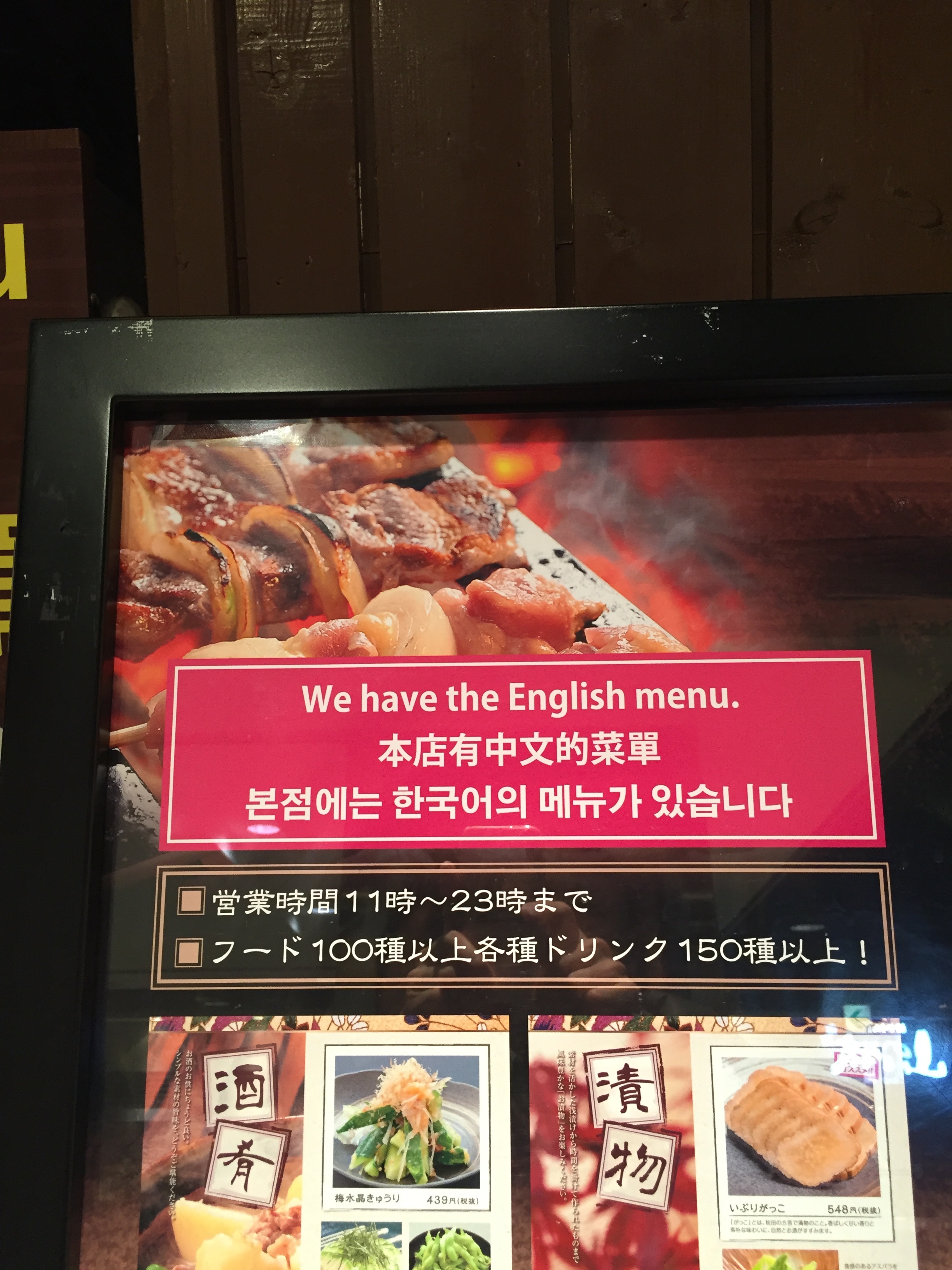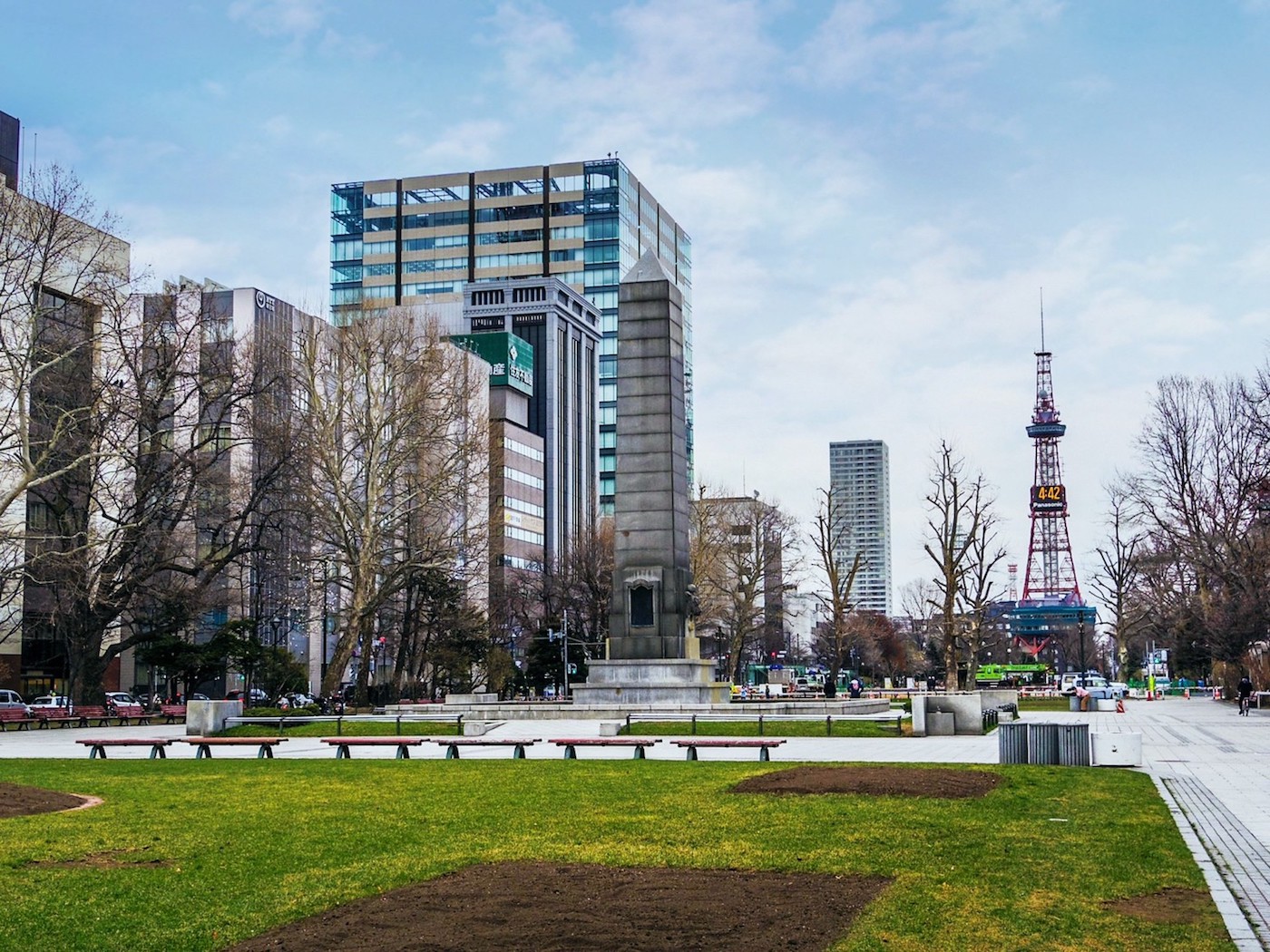
(この記事は、「札幌英会話ニュースレター #4」の英語訳です。)
‘We have the English menu.’ X 🙄
Translated into Japanese, this sign would read あの英語のメニュー一枚あります (ano eigo no menyuu ichimai arimasu, ‘Oh, you mean that English menu? We have one of those.’)
First, we use the article ‘the’ when referring to a concrete noun (as if we were pointing to an object with one of our fingers) or to a specific noun that we have already mentioned in speech or in writing. Close equivalents to the word ‘the’ in Japanese include この, その, and あの (kono, sono, ano; this, that, that).
Examples:
Look at the sky! (空を見て!, sora o mite!)
Bring me the file. (そのファイルを持ってきて, sono huairu o motte kite.)
Can you see the moon? (お月様見える?, otukisama mieru?)
Did you like the CD? (あのCDは気に入った?, ano CD ha ki ni itta?)
I’m going to see the new manager tomorrow. (明日新しいマネージャーに会います, asita atarashi maneegyaa ni aimasu.)
Next, in this sentence the word ‘menu’ in the singular refers only to a single menu. If you have more than just one English menu at your restaurant, then go ahead and use the plural form, ‘menus.’
―> We have English menus!
Used in everyday English conversations, this sentence would sound quite proper and natural. For example, if a foreign customer came to your restaurant in Sapporo and asked, “Do you have English menus?”, it would be perfectly fine for you to answer, “Yes, we have English menus!”
However, when written on an English sign and not spoken in English conversation, the sentence structure “We have … X …” would normally be reserved for somewhat rare or surprising items that are not usually stocked at most restaurants.
Examples:
We have live fugu!!! (いけすフグあります!, ikesu fugu arimasu!)
We have the best chef in the world! (世界一のシェフがいます!, sekai ichi no chefu ga imasu!)
We have 99 different desserts!!! (99種類のデザート置いてあります!, kyuujyuukyuu shurui no dezaato oite arimasu!)
We have topless waitresses! (トップレスのウェイトレスがいます!, toppuresu no uetoresu ga imasu!)
Obviously, using such sentences on English menus or signs would create a surprising and memorable impact.
However, in order to state that your establishment provides more banal, everyday items than these, use the sentence structure “ … X … Available.”
For example, “Restrooms Available Inside.” (店内トイレあります, tennai toire arimasu.)
“Free Wi-Fi Available.” (無料無線LAN使えます, muryou musen LAN tukaemasu.)
“Private Karaoke Room Available” (カラオケ個室あります, karaoke kositu arimasu.)
And “English Menus Available”! (英語のメニュー置いてあります!, eigo no menyuu oite arimasu.)
―> English Menus Available √ 😇
At Susukino Lafiler in Chuo Ward, Sapporo 📸
Sapporo English Conversation Newsletter
Related Articles
Improving Your English Speaking Skills
Sapporo English Signs Lost in Translation ~ Grammar Lesson #13


